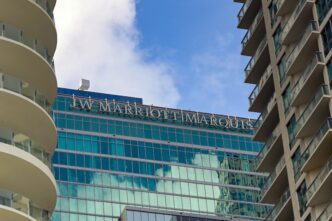Executive Summary
The Story So Far
Why This Matters
Who Thinks What?
Miami’s dynamic construction landscape is experiencing an unprecedented boom, attracting developers, investors, and construction firms eager to capitalize on the city’s rapid growth and economic vitality. This surge, fueled by a significant influx of residents, businesses, and capital, particularly in the post-pandemic era, presents immense opportunities for profit but also introduces complex challenges in securing adequate funding and meticulously managing projects from inception to completion. Understanding the multifaceted drivers behind this expansion and strategically navigating its financial and operational intricacies is paramount for anyone looking to successfully participate in and maximize returns from Miami’s evolving skyline.
Understanding Miami’s Construction Landscape
The current construction boom in Miami is not merely a cyclical upswing but a transformative period driven by several powerful forces. A continuous migration of high-net-worth individuals and businesses, especially from high-tax states and international markets, has created an insatiable demand for both luxury residential and sophisticated commercial spaces. This demographic shift has positioned Miami as a global hub for finance, technology, and culture, significantly altering its urban fabric.
The types of projects emerging reflect this diverse demand, ranging from ultra-luxury condominiums and sprawling multi-family residential complexes to cutting-edge office towers, expansive retail developments, and critical infrastructure upgrades. Each segment presents unique opportunities and requires tailored approaches to funding and management. The market dynamics are characterized by high demand, rapidly appreciating property values, but also by persistent challenges such as labor shortages, escalating material costs, and complex supply chain disruptions.
Securing Funding in a Dynamic Market
Navigating the financial currents of Miami’s hot real estate market requires a sophisticated understanding of both traditional and innovative funding mechanisms. Developers must present robust, well-researched proposals that inspire confidence among potential capital providers.
Traditional Financing Avenues
Commercial banks remain a cornerstone for construction financing, offering construction loans and commercial mortgages. To secure these, developers typically need a strong business plan, substantial collateral, a proven track record, and often, significant pre-sales or pre-leases to demonstrate market viability. Banks evaluate projects rigorously, focusing on the developer’s financial strength, the project’s feasibility, and its alignment with current market conditions.
These loans are generally disbursed in stages, tied to construction milestones, which requires meticulous project management and accurate reporting. While often the most cost-effective, traditional bank financing can be slow and rigid, sometimes struggling to keep pace with the rapid shifts in Miami’s market.
Exploring Alternative Funding Sources
Beyond traditional banks, a diverse ecosystem of alternative funding sources has emerged, each with its own advantages and suitable for different project profiles. Private equity and venture capital firms are increasingly active, particularly for larger, high-growth projects that promise significant returns. These investors often seek a more substantial stake and a clear exit strategy, valuing innovation and scalability.
Crowdfunding platforms have democratized real estate investment, allowing smaller to mid-sized projects to pool capital from a broad base of individual investors. This approach can be faster and more flexible than traditional routes, though it often comes with higher administrative overhead for managing numerous investors. Mezzanine debt, a hybrid of debt and equity, offers a middle ground, providing capital that is subordinate to senior debt but senior to equity, often with higher interest rates and an equity kicker.
Miami also benefits from federal initiatives like Opportunity Zones, which offer significant tax incentives for investing in designated low-income areas. Several key development corridors in Miami-Dade County fall within these zones, making them attractive for investors seeking to defer or reduce capital gains taxes. Furthermore, foreign investment, particularly from Latin America, Canada, and Europe, continues to play a pivotal role, drawn by Miami’s stable economy, strong property rights, and attractive returns.
Leveraging FinTech for Funding
The FinTech revolution is fundamentally reshaping how construction projects are funded. Digital lending platforms offer faster approvals and more flexible terms, often leveraging AI-powered credit assessment to evaluate risk more efficiently. Blockchain technology is also beginning to make inroads, enabling the tokenization of real estate assets, which allows for fractional ownership and greater liquidity. This innovation can broaden the investor base and streamline transactions, reducing intermediaries and associated costs.
Smart contracts, powered by blockchain, can automate payment releases based on verified construction milestones, enhancing transparency and reducing disputes. These technologies are not just about speed; they offer enhanced data security and auditability, which are increasingly important in complex financial transactions.
Strategic Project Management for Profit Maximization
Securing funding is only half the battle; effective project management is critical to translating investment into profit. In a market as competitive and dynamic as Miami’s, meticulous planning and execution are non-negotiable.
The Pre-Construction Phase: Laying the Groundwork
Thorough due diligence is the bedrock of any successful project. This includes comprehensive market research to validate demand, feasibility studies to assess economic viability, and detailed analysis of zoning regulations and environmental considerations. Miami’s regulatory environment can be complex, making expert navigation of permitting and approval processes crucial to avoid costly delays.
Accurate cost estimation and budgeting are paramount. Developers must account for all direct and indirect costs, including a robust contingency fund to absorb unforeseen expenses. Selecting the right contractors involves rigorous vetting, evaluating their experience, financial stability, and safety records. Clearly defined contracts with performance incentives can align contractor goals with project objectives, ensuring timely and high-quality delivery.
The Construction Phase: Execution and Oversight
During construction, integrating technology can significantly enhance efficiency and oversight. Building Information Modeling (BIM) allows for 3D visualization, clash detection, and better collaboration among all stakeholders, reducing errors and rework. Project management software provides real-time tracking of progress, budgets, and schedules, enabling proactive problem-solving. Drone monitoring offers aerial views of site progress and can identify issues before they become major problems.
Effective supply chain management is critical in mitigating the impact of material shortages and price volatility. Establishing strong relationships with suppliers and negotiating favorable terms can help secure materials and manage costs. Robust risk management strategies, including comprehensive insurance coverage, stringent safety protocols, and readily available legal counsel, are essential to protect the project from unforeseen events. Regular quality control inspections ensure adherence to design specifications and building codes, safeguarding the project’s long-term value.
Managing labor in Miami’s tight market requires strategic thinking. Attracting and retaining skilled workers through competitive wages, benefits, and a positive work environment is vital. Investing in training programs can also help upskill the workforce and address specific project needs.
Post-Construction and Sales/Leasing: Realizing Returns
Once construction is complete, a well-executed marketing and sales strategy is essential for realizing maximum profit. This includes leveraging digital marketing channels, engaging experienced broker networks, and offering compelling virtual tours to reach a global audience. For rental properties, efficient property management ensures tenant satisfaction, minimizes vacancies, and protects the asset’s long-term value.
The financial close-out phase involves final audits, securing lien waivers from all contractors and suppliers, and managing warranties. A smooth transition from construction to occupancy or sales ensures that all financial obligations are met and that the project is delivered cleanly.
Leveraging FinTech for Enhanced Efficiency and Transparency
FinTech’s impact extends beyond just funding, offering powerful tools for managing construction projects with greater efficiency and transparency. Integrated enterprise resource planning (ERP) systems can connect financial data, project timelines, supply chain information, and human resources, providing a holistic view of operations.
AI and machine learning are increasingly used for predictive analytics, helping developers anticipate market trends, assess project risks more accurately, and optimize construction schedules. For instance, AI can analyze historical data to forecast material price fluctuations or identify potential delays, allowing for proactive adjustments. This data-driven approach minimizes waste, improves decision-making, and ultimately enhances profitability.
Navigating Challenges and Mitigations
While the opportunities are vast, Miami’s construction boom is not without its challenges. Rising costs for materials and labor, persistent supply chain disruptions, and complex regulatory hurdles can impact project timelines and budgets. Fluctuating interest rates can affect financing costs, and the risk of market saturation in certain segments demands careful market analysis.
Mitigation strategies include diversifying funding sources, locking in material prices through forward contracts, fostering strong relationships with local authorities to streamline permitting, and building flexibility into project plans. Continuous market monitoring and adapting to evolving consumer demands are also crucial for long-term success.
Miami’s construction boom represents a significant opportunity for astute developers and investors, offering the potential for substantial returns in a rapidly expanding market. However, capitalizing on this growth requires more than just capital; it demands a strategic approach to securing diverse funding, meticulously managing every phase of a project, and embracing innovative FinTech solutions for enhanced efficiency and transparency. By navigating these complexities with foresight and adaptability, participants can not only contribute to Miami’s evolving skyline but also secure maximum profit in this vibrant and competitive landscape.








